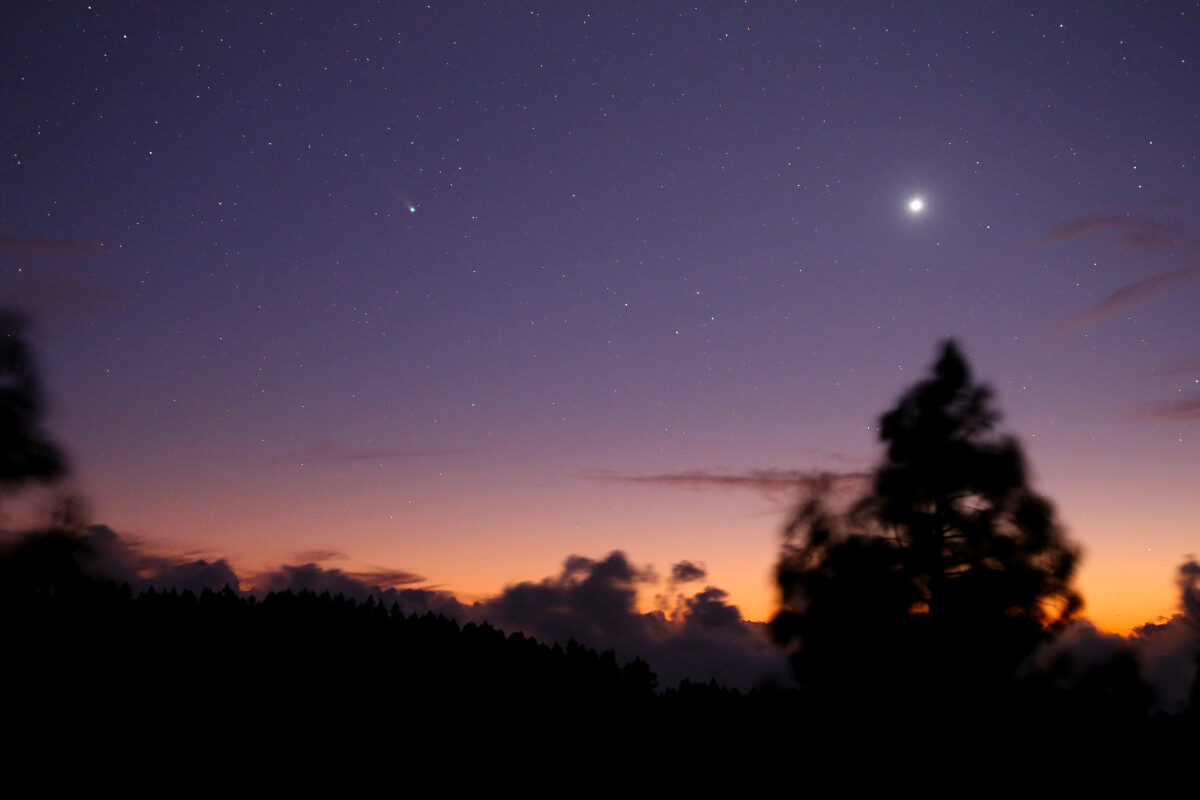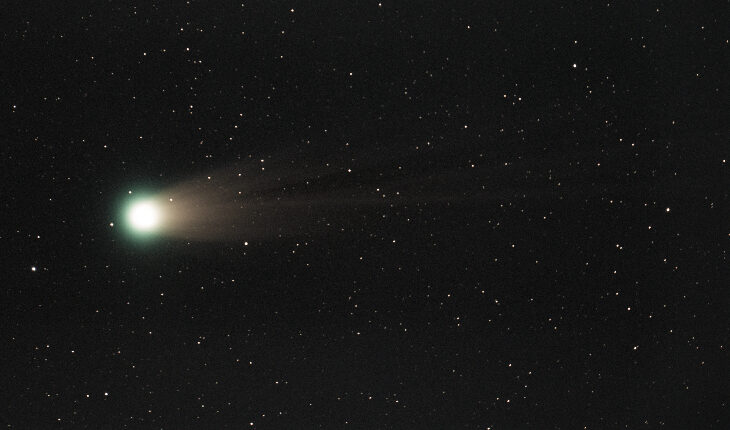
"I estimate magnitude 3 or brighter," he says.
The outburst might signal a fragmentation event in the comet's core. This would come as no surprise. The comet is heading for its closest approach to the sun (0.61 AU) on Jan. 3rd. Increasing heat may be liberating new jets of gas and dust from the comet's core--or worse, blowing away huge chunks of ice and rock.
Comment: As detailed in Comet Leonard, the brightest of the year, is fading and 'acting strange' the change in behaviour is likely due to its electrical differential that is not taken into account by the mainstreams theory of cometary activity. And, as noted in the link, it goes some way towards explaining why megacomet Bernardinelli-Bernstein sprouted a tail remarkably far from the sun.

Photographer's website:
https://www.facebook.com/BathurstObservatory
"The comet seems to be having an outburst with a noticeable jet of material [emerging from the core]," he says.
Amateur astronomers are encouraged to monitor Comet Leonard while the outburst continues. If it's a big breakup, the comet might disintegrate and fizzle. Otherwise, it could brighten even more as the comet approaches the sun. To find Leonard in the sunset sky, go to Venus and turn left--or point your optics here.



Comment: Another photograph from today showing in higher definition comet Leonard's two streamers:
See also:
- Volcanoes, Earthquakes And The 3,600 Year Comet Cycle
- Betelgeuse is neither as far nor as large as once thought
- Smoking Gun: 'Giant Comet' theory by Napier, Clube et al. vindicated in new paper
- Enigmatic ancient brown dwarf discovered in solar neighborhood suggests more 'accidents' may be lurking in our galaxy - NASA
- Sott Exclusive: Nemesis, not 'Nibiru' - Clarifying mainstream reports about 'a large ninth planet' that periodically sends comets our way
- Planet-X, Comets and Earth Changes by J.M. McCanney
- Comet 67P surprises scientists with 'bright outbursts', collapsing cliffs and rolling boulders during Rosetta mission
And check out SOTT radio's: